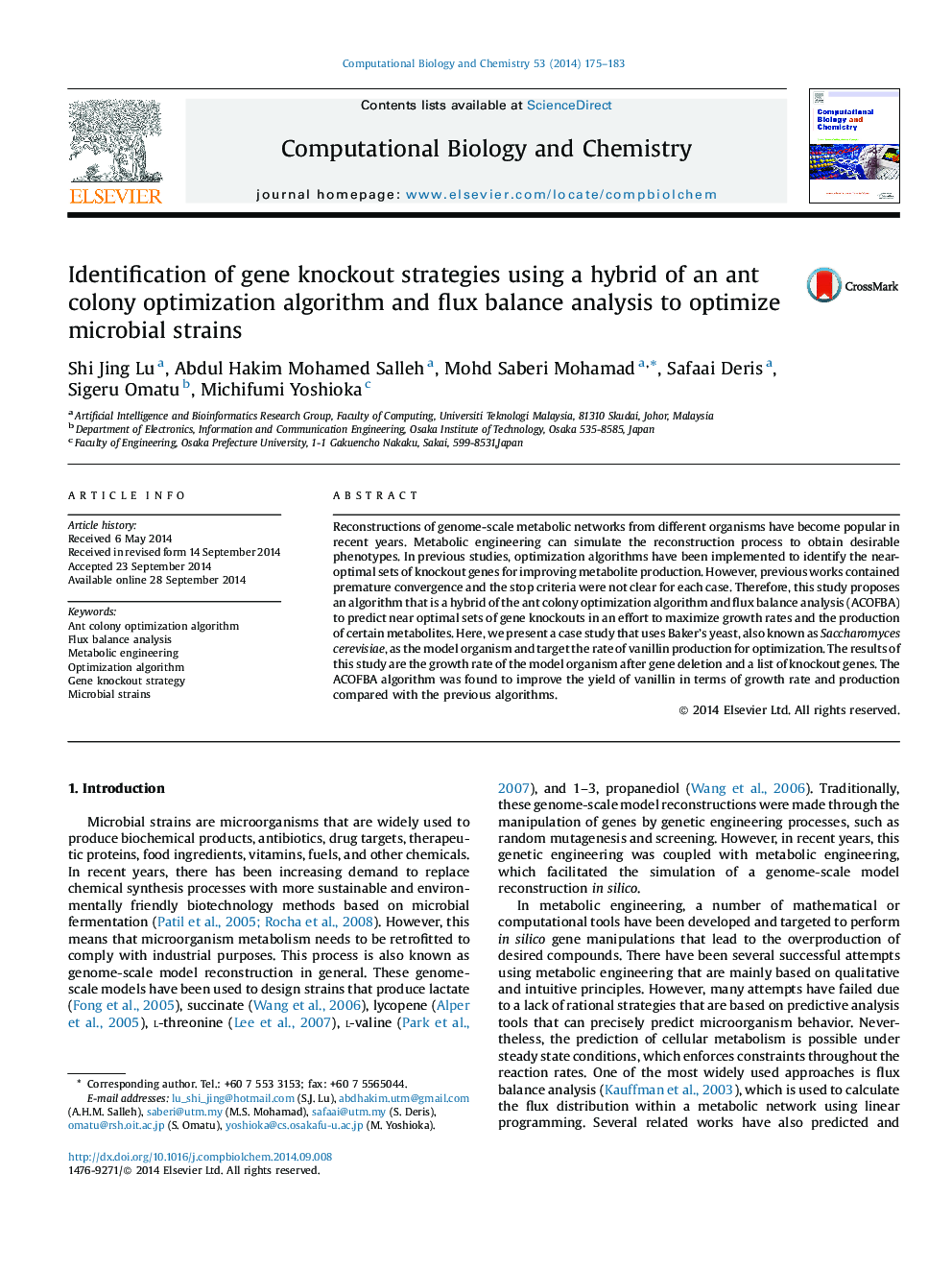| Article ID | Journal | Published Year | Pages | File Type |
|---|---|---|---|---|
| 15081 | Computational Biology and Chemistry | 2014 | 9 Pages |
•We proposed a hybrid algorithm to increase metabolites production.•The hybrid algorithm select best combination of gene knockout.•Using 2 microorganisms shows increment in metabolites production.
Reconstructions of genome-scale metabolic networks from different organisms have become popular in recent years. Metabolic engineering can simulate the reconstruction process to obtain desirable phenotypes. In previous studies, optimization algorithms have been implemented to identify the near-optimal sets of knockout genes for improving metabolite production. However, previous works contained premature convergence and the stop criteria were not clear for each case. Therefore, this study proposes an algorithm that is a hybrid of the ant colony optimization algorithm and flux balance analysis (ACOFBA) to predict near optimal sets of gene knockouts in an effort to maximize growth rates and the production of certain metabolites. Here, we present a case study that uses Baker’s yeast, also known as Saccharomyces cerevisiae, as the model organism and target the rate of vanillin production for optimization. The results of this study are the growth rate of the model organism after gene deletion and a list of knockout genes. The ACOFBA algorithm was found to improve the yield of vanillin in terms of growth rate and production compared with the previous algorithms.
Graphical abstractFigure optionsDownload full-size imageDownload as PowerPoint slide
